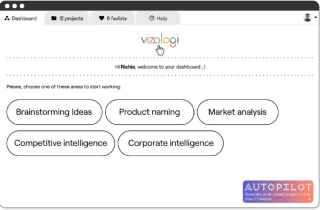10 Proven Strategies to Optimize and Improve Business Processes
No business succeeds by accident, as progress depends on how well everyday tasks connect and flow. A well-organized process saves time, reduces confusion, and helps teams focus on what matters most. Yet many companies still struggle with scattered systems and outdated routines that hold them back. True improvement begins when leaders take a closer look at how work actually happens.
In cities big and small, firms now turn to an embedded finance company to close gaps between financial operations and daily management. When finance and process design move together, businesses gain clarity, consistency, and a sharper competitive edge. Likewise, this article will talk about strategies that improve business processes.
1. Analyze Existing Workflows
Improvement starts with awareness. Businesses must understand how current workflows operate before making any changes. A detailed process map reveals where inefficiencies, redundancies, and delays exist. This analysis provides a foundation for practical, results-driven adjustments.
Every step should serve a clear purpose that contributes to productivity. Managers can use time tracking, employee input, and data reviews to identify pain points. Once areas of waste are known, they can be prioritized for immediate correction. This stage sets the groundwork for effective transformation.
2. Set Clear and Measurable Goals
Without direction, improvement efforts lose momentum. Every process update must connect to a clear goal, such as faster response times, lower costs, or higher accuracy. Goals give employees structure and measurable success points. Clear direction aligns all teams toward the same outcomes.
These goals must also be realistic and supported by data. Vague objectives create confusion and poor results. Managers should break large goals into smaller, trackable milestones to ensure progress. Regular evaluation keeps the improvement process consistent and achievable.
3. Standardize and Document Procedures
Standardization ensures uniform results across teams and departments. When everyone follows the same process, performance becomes predictable and measurable. Documentation turns this consistency into a reference point for training and quality control. Clear instructions reduce confusion and improve accountability.
New employees adapt faster when they have well-documented guidelines to follow. Written procedures also simplify internal audits and compliance checks. A documented system protects businesses from disruption when roles change or staff rotate. This structure makes every routine task repeatable and reliable.
4. Automate Repetitive Tasks
Automation eliminates time-consuming manual work and reduces the chance of human error. It allows teams to focus on strategic projects instead of routine data entry or report updates. Technology tools can handle scheduling, invoicing, and tracking with greater precision. Businesses save time and improve output accuracy in the process.
Automation also improves employee morale by removing tedious duties. It ensures consistent results and better use of resources. With fewer delays and less manual oversight, operations move faster and smoothly. The overall productivity gain directly supports business growth.
5. Partner With an Embedded Finance Company
Financial operations define the rhythm of every organization. Working with an embedded finance company gives businesses access to integrated payment platforms and advanced data systems. These tools allow real-time financial tracking, improved billing accuracy, and automated reporting. The connection between finance and operations becomes seamless and transparent.
An embedded partner helps eliminate redundant accounting steps and manual transaction handling. They offer specialized solutions tailored to each company’s structure and size. This partnership enhances accuracy, speeds up decision-making, and supports compliance with financial regulations. The result is smoother management and long-term operational confidence.
6. Enhance Communication and Collaboration
Clear communication builds trust and efficiency between departments. When teams share information freely, delays decrease, and coordination improves. Transparent systems allow employees to understand their responsibilities and timelines clearly. Collaboration becomes easier when everyone works from shared data and unified goals.
Managers can improve communication through daily updates, internal messaging tools, or collaborative dashboards. Quick feedback loops keep projects on track and reduce misinterpretation. Clear communication also helps detect problems early before they escalate. The stronger the collaboration, the smoother the entire business process.
7. Empower Employees Through Ownership and Training
Employees drive process success more than any system or tool. Training ensures they have the knowledge and confidence to execute tasks effectively. When employees understand why improvements matter, they work with purpose and consistency. Empowerment builds a culture of responsibility and accountability.
Managers should involve teams in process evaluations to collect practical insights. This participation gives staff a sense of ownership over the final results. Continuous learning opportunities help maintain performance standards and adaptability. When people feel trusted and capable, process excellence becomes second nature.
8. Leverage Data and Technology for Smarter Decisions
Data offers clarity that guesswork cannot match. Businesses that track performance metrics can identify weak areas and adjust before issues escalate. Technology platforms consolidate this data into visual reports for faster understanding. Decisions made from data are faster, fairer, and more precise.
Modern tools such as analytics dashboards or business intelligence software simplify trend analysis. Companies can forecast outcomes and align operations with future goals. Data transparency also increases trust across departments by making performance measurable. Smarter decisions come from clear information, not assumptions.
9. Strengthen Quality Control and Risk Management
Every business process must include safeguards that preserve quality. Poor quality creates rework, lost time, and customer dissatisfaction. Strong quality control measures detect errors early and prevent repeat issues. Risk management complements this by protecting operations from potential losses or compliance breaches.
Regular inspections, audits, and team reviews help maintain consistent standards. Risk analysis tools identify vulnerabilities before they affect outcomes. Businesses that value quality and safety gain long-term trust from clients and employees. Together, these two functions form the backbone of process reliability.
Key Steps for Better Quality and Risk Control
Quality and risk control work best when structured properly. Companies can adopt several key steps to create dependable systems. Below are essential actions that support consistency and prevent disruption:
- Define Clear Standards: Establish expectations for performance, safety, and compliance.
- Implement Regular Reviews: Schedule audits and feedback sessions to ensure alignment.
- Use Real-Time Tracking: Monitor metrics continuously to detect deviations early.
- Promote a Quality Culture: Encourage every employee to take responsibility for results.
10. Commit to Continuous Improvement
Process improvement never ends; it evolves with time and business needs. A culture of ongoing development helps companies stay competitive and efficient. Flexibility ensures teams can adapt to technology shifts and market demands. The goal is to make progress a continuous habit rather than a one-time project.
Leadership must support change with consistent communication and recognition. Employees should feel encouraged to suggest updates that enhance workflow. Regular feedback loops help identify small adjustments that create big results. When improvement becomes a shared mindset, performance stays strong across every department.
Optimized processes form the foundation of sustainable success. Each strategy mentioned helps reduce waste and increase efficiency. Partnering with an embedded finance company enhances these outcomes by integrating financial intelligence with operational workflows. Combined with communication, analytics, and continuous learning, it forms a complete efficiency ecosystem. Businesses that apply these ten strategies build agility, resilience, and long-term profitability in an ever-changing global market.

Vizologi is a revolutionary AI-generated business strategy tool that offers its users access to advanced features to create and refine start-up ideas quickly.
It generates limitless business ideas, gains insights on markets and competitors, and automates business plan creation.


